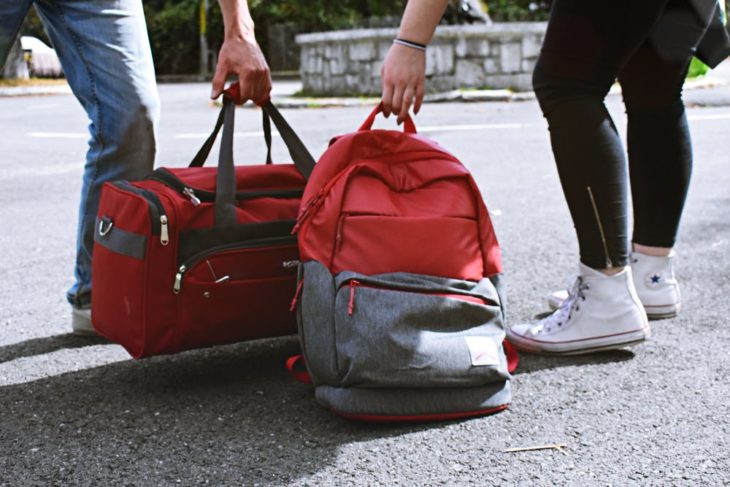If you or someone you know is about to leave home — whether for college, school, work, or any other reason — it might be time to pack a “quarantine go-bag.” In fact, if you live with other people at all, it makes good sense to have a quarantine bag packed for yourself and your loved ones.
What we mean by a “quarantine go-bag” is a bag that contains what you might need in order to self-isolate more comfortably in a designated quarantine area. You’ll use it if you get sick, but you might also need it if you come in contact with a person who’s tested positive. It could also be something practical for grabbing quickly on the way to hospital treatment.
Why would you pack a quarantine bag?
- Save energy. If you get sick, you don’t want to struggle to gather what you need to go quarantine away from loved ones.
- Protect others. A pre-packed bag will help ensure those who are shedding live virus can get into self-quarantine quickly, without exposing others in the community while seeking needed items.
- Get peace of mind. At this point, it just doesn’t make sense to wait until you get infected to gather what you need. Prepare for the worst case scenario so you can have peace of mind.
Think about packing your quarantine go-bag like you might think about packing a bag for the hospital when you’re eight months pregnant. It could happen at any time, so you want to have the things you’ll need ready when the time comes.
The truth of the matter is that at this point in the pandemic, with cases still rising in most of the country and spreading deeper into rural communities, any of us could get sick at any time. It is extremely reasonable to continue staying home as much as possible while also preparing for the possibility of illness.
Worth noting: If you make a go-bag for someone who lives outside your home, sequester it for at least three days before dropping it off, and use hand hygiene when handling it. If transit time is more than three days, you can ship it domestically as a care package without needing to sequester it, but the receiver may wish to disinfect their package or sequester it for a few days when they get it.
What should go inside a quarantine bag?
When packing a quarantine bag, it’s important to think both about what you’ll need for medical reasons and what you might want for your mental health. Even mild cases of COVID-19 can last for weeks (months, in some cases). So if you get sick, you could end up on your own for a while.
If you do test positive for COVID, a doctor might recommend that you get a thermometer, a pulse oximeter, and over-the-counter medications so you can care for yourself in quarantine and monitor your symptoms. You might have already stocked up on those items in case you needed them during the pandemic. Now’s the time to put them in a safe spot with everything else you’ll need if you get sick.
Note: All the kits we’ve included in this article have been built using Kit Builder. You can make copies of these kits and modify them to fit your needs.
Packing a hospital go-bag
It’s grim to think about, but the worst case scenario is that you or someone you love ends up in the hospital with severe symptoms of COVID-19. If that happens, you won’t be able to have visitors bring important items to you. So you’ll want to have the essentials ready to go.
The most important stuff to pack: your insurance card, your doctor’s information, and important family phone numbers.
It’s also smart to make sure you have extra blankets, socks, and toiletries — the kinds of comforts you might want if you were sick and no one could visit you with supplies. And because no one will be able to visit, pack books you might want to read, an extra phone charger, ample entertainment, and a kickstand for your phone.
Once you have a bag, make a plan
The sane prepper mantra says that having great gear is not enough. You need the plans and skills to match. That rule applies here, too.
You not only need a packed bag, but you also need a plan for where to quarantine and how long. In fact, you may not even be the one who ends up using your quarantine plan. What happens if your college kid comes home because of a pandemic-related college closure? What if a family member joins you after a job loss?
Designating a quarantine space in your home is important. Folks in self-quarantine need access to a bed and bathroom at minimum (preferably a bathroom that isn’t shared), and if they don’t have access to their own kitchen or kitchenette, food trays will need to be brought to and retrieved from their area of rest.
It’s best if their isolation area can be behind a closed door. A master bedroom with an en suite bathroom works; a furnished basement or an in-law units are also great.
An empty garage can be made into a make-shift isolation area, but shared spaces will require sanitizing between use. (Car exhaust is both deadly and a terrible irritant to someone with a potentially horrible respiratory illness, so keep the cars out if you’re using a garage for this purpose.)
Remind yourself why isolation is important, and memorize the reasons in advance. Quarantine is harder to execute than you’d expect — in part because of the emotional toll it takes to voluntarily separate yourself from the people you love. Help isolating loved ones to understand why it’s so important to isolate by keeping these reminders top of mind:
Even if people don’t feel sick, they can shed large amounts of virus if infected. A grandparent or elderly friend, family member, or neighbor could die if infected.
If housemates, family members, or others get sick the time off work for that person could be financially devastating. We don’t want the people around us or in our community to lose their housing, for example, because of a lack of willingness to self-isolate on our part.
Make sure to read the CDC Guidelines for caring for someone sick with COVID-19 at home. Have those guidelines ready and make sure you know how to prepare just in case.
If you’d like to go the extra mile, we made this kit for someone caring for a person using a quarantine space:
Our tips on disinfecting after quarantine is over are covered in our post on hosting temporary visitors during this time. Stay safe.


You are reporting the comment """ by on